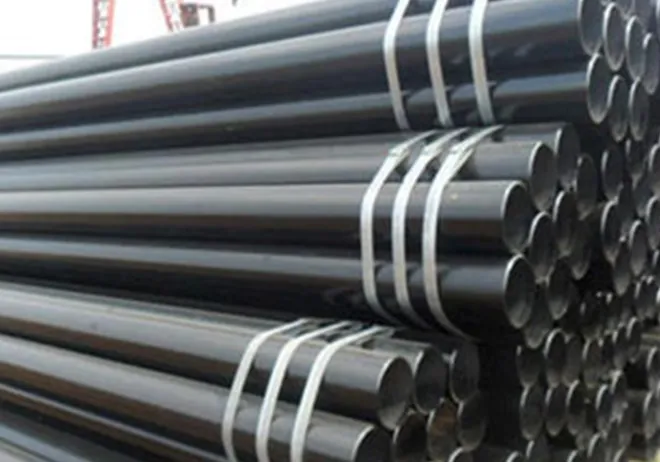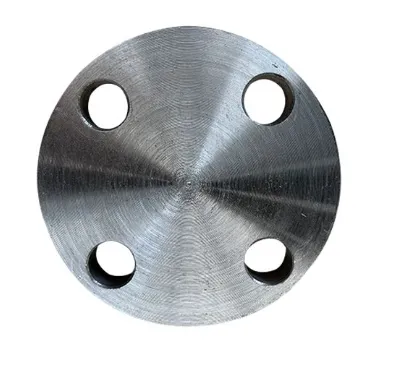-
Cangzhou Yulong Steel Co., Ltd.
-
Phone:
+86 13303177267 -
Email:
admin@ylsteelfittings.com
- English
- Arabic
- Italian
- Spanish
- Portuguese
- German
- kazakh
- Persian
- Greek
- French
- Russian
- Polish
- Thai
- Indonesian
- Vietnamese
- Zulu
- Korean
- Uzbek
- Hindi
- Serbian
- Malay
- Ukrainian
- Gujarati
- Haitian Creole
- hausa
- hawaiian
- Hebrew
- Miao
- Hungarian
- Icelandic
- igbo
- irish
- Japanese
- Javanese
- Kannada
- Khmer
- Rwandese
- Afrikaans
- Albanian
- Amharic
- Armenian
- Azerbaijani
- Basque
- Belarusian
- Bengali
- Bosnian
- Bulgarian
- Catalan
- Cebuano
- China
- China (Taiwan)
- Corsican
- Croatian
- Czech
- Danish
- Esperanto
- Estonian
- Finnish
- Frisian
- Galician
- Georgian
- Kurdish
- Kyrgyz
- Lao
- Latin
- Latvian
- Lithuanian
- Luxembourgish
- Macedonian
- Malgashi
- Malayalam
- Maltese
- Maori
- Marathi
- Mongolian
- Myanmar
- Nepali
- Norwegian
- Norwegian
- Occitan
- Pashto
- Dutch
- Punjabi
- Romanian
- Samoan
- Scottish Gaelic
- Sesotho
- Shona
- Sindhi
- Sinhala
- Slovak
- Slovenian
- Somali
- Sundanese
- Swahili
- Swedish
- Tagalog
- Tajik
- Tamil
- Tatar
- Telugu
- Turkish
- Turkmen
- Urdu
- Uighur
- Welsh
- Bantu
- Yiddish
- Yoruba

יונ . 01, 2025 03:22 Back to list
Stainless & Carbon Steel Pipe Weld Fittings - Durable Solutions
- Understanding fundamentals and industrial significance of welded pipe connectors
- Performance metrics and material science behind corrosion-resistant fittings
- Technical specifications comparison across leading manufacturing standards
- Advanced fabrication techniques for custom engineering requirements
- Applications in high-pressure industrial systems with case performance data
- Compliance frameworks and testing methodologies ensuring operational safety
- Innovation trajectory shaping next-generation fluid transfer infrastructure

(steel pipe weld fittings)
Essential Engineering Components: The Critical Role of Steel Pipe Weld Fittings
Welded connectors form the circulatory system of modern industrial infrastructure, with steel pipe weld fittings
serving as vital junctions in piping networks. These components maintain structural integrity while accommodating directional changes, diameter transitions, and branch connections in high-pressure systems. Unlike threaded alternatives, welded joints eliminate potential leak paths through homogeneous material fusion. According to ASME B31.3 pressure piping standards, butt weld connections provide 95-100% joint efficiency compared to 75-85% for threaded joints in critical service applications. This seamless integration capability makes weld fittings indispensable in petrochemical plants where the global market for industrial pipe fittings is projected to reach $98.2 billion by 2027, growing at 5.8% CAGR.
Material Performance Advantages in Extreme Environments
Material selection determines fitting performance boundaries. 316L stainless steel weld pipe fittings maintain structural integrity at temperatures exceeding 1500°F while resisting pitting corrosion in chloride-rich environments - critical for desalination plants processing 95 million m³/day globally. Meanwhile, carbon steel butt weld pipe fittings offer superior strength-to-cost ratios with tensile capabilities reaching 70,000 PSI. Recent metallurgical advancements like ASTM A350 LF2 alloy enhance low-temperature toughness to -50°F without ductile-brittle transition. Corrosion rates demonstrate stark material advantages: in sulfuric acid service (20% concentration), carbon steel exhibits 250+ MPY corrosion rates versus under 5 MPY for super duplex UNS S32750 weld fittings. These differentials determine maintenance cycles spanning months versus decades across processing facilities.
Comparative Manufacturer Specifications Analysis
| Material Type | ASTM Standard | Pressure Rating | Temperature Range | Relative Cost Index |
|---|---|---|---|---|
| 304 Stainless Steel | A403 | 1,500 PSI @ 100°F | -425°F to 1500°F | 1.5x |
| 316L Stainless Steel | A403 | 1,420 PSI @ 100°F | -425°F to 1500°F | 1.8x |
| A106 Carbon Steel | A234 | 2,000 PSI @ 100°F | -20°F to 1000°F | 1.0x |
| Duplex 2205 | A815 | 2,275 PSI @ 100°F | -40°F to 600°F | 2.5x |
Custom Engineering Solutions for Complex Applications
Beyond standard ASME B16.9 dimensional requirements, specialized applications demand custom-configured weld fittings. Offshore platform hydraulic systems increasingly utilize corrosion-resistant alloys (CRAs) with 34-inch diameter 90° elbows designed for 15,000 PSI WP. Precision flow dynamics require computational fluid dynamics (CFD) modeling to create radiused miters reducing pressure drop by 22% compared to standard elbows. Nuclear facilities specify vacuum-arc remelted materials achieving inclusion ratings under ASTM E45 Level ½. For cryogenic LNG transfer (-260°F), cold-drawn seamless fabrication maintains concentricity within 1% deviation across 80-foot pipe spools. Such technical specifications require manufacturers to maintain proprietary forming databases covering over 8,000 material-form combinations.
Industry Application Performance Case Studies
Geothermal energy extraction exemplifies weld fitting performance challenges. A New Zealand installation reported 28% higher mean-time-between-failures using super duplex elbows versus standard 316L stainless in 392°F brine carrying 150,000 ppm chlorides. Similarly, carbon capture infrastructure requires specialized alloys where CO2 compression systems operating at 3,000 PSI mandate seamless carbon steel butt weld pipe fittings with post-weld heat treatment (PWHT) to achieve Charpy V-notch toughness exceeding 40 J at -30°C. Refinery hydrocracker units demonstrate material endurance limits: standard carbon steel fittings last 4-6 years in 850°F service versus 15+ years for micro-alloyed grades containing 0.25% Mo. Such performance differentials significantly impact project lifetime costing models.
Quality Assurance and Regulatory Compliance
Pressure-retaining components adhere to rigorous certification frameworks including ASME Section IX welding procedures, PED 2014/68/EU for European markets, and API 5CT for sour service applications. Third-party verification through ABS, DNV, and Lloyds Register validates materials beyond mill certificates via batch-specific testing including:
- Ultrasonic examination detecting imperfections larger than 5% wall thickness
- Positive Material Identification (PMI) verifying alloy composition
- Hardness mapping ensuring heat-affected zones below RC22
- Pitting Resistance Equivalent Number (PREN) confirmation exceeding 40 for offshore fittings
For nuclear applications, ASME Section III requires complete digital traceability of materials from melt chemistry through forming history, resulting in documentation packages averaging 350 pages per fitting.
Innovation Pathways in Steel Pipe Weld Fittings Manufacturing
Emerging manufacturing technologies expand weld fittings capabilities. Additive manufacturing now produces inconel branch connections with reduced lead times from 26 weeks to 72 hours. Smart fittings incorporating embedded sensors monitor wall thickness erosion in real-time using ultrasonic transducers transmitting data via industrial IoT protocols. Material science developments include nanostructured steels achieving yield strength beyond 200,000 PSI while maintaining elongation over 25% - properties previously considered mutually exclusive. Such innovations address evolving global demands as chemical processing plants increasingly handle extreme pressures exceeding 100,000 PSI in specialized reactor systems. These technological advancements ensure steel pipe weld fittings maintain critical positioning within next-generation industrial infrastructure.

(steel pipe weld fittings)
FAQS on steel pipe weld fittings
Q: What are the advantages of using stainless steel weld pipe fittings?
A: Stainless steel weld pipe fittings offer superior corrosion resistance, high durability in extreme temperatures, and hygienic properties ideal for food processing and chemical industries. Their weldability ensures leak-proof connections in critical applications.
Q: How do carbon steel butt weld pipe fittings differ from threaded fittings?
A: Carbon steel butt weld fittings create permanent, high-strength joints through welding, eliminating leakage risks in high-pressure systems. Threaded fittings rely on screw connections, which may loosen over time under stress or vibration.
Q: Can stainless steel weld pipe fittings handle high-temperature applications?
A: Yes, stainless steel weld fittings maintain structural integrity at temperatures up to 870°C (1600°F) due to their chromium content. They’re widely used in heat exchangers, boilers, and exhaust systems requiring thermal stability.
Q: What standards govern carbon steel butt weld pipe fittings manufacturing?
A: Common standards include ASME B16.9 for dimensions and ASTM A234 for material specifications. These ensure compatibility with piping systems and compliance with pressure ratings in oil/gas and power generation sectors.
Q: How to select between stainless steel and carbon steel weld fittings?
A: Choose stainless steel for corrosive environments or sanitary requirements. Opt for carbon steel butt weld fittings in cost-sensitive, high-strength applications like steam pipelines or structural supports where rust resistance is secondary.
Latest news
-
ANSI 150P SS304 SO FLANGE
NewsFeb.14,2025
-
ASTM A333GR6 STEEL PIPE
NewsJan.20,2025
-
ANSI B16.5 WELDING NECK FLANGE
NewsJan.15,2026
-
ANSI B16.5 SLIP-ON FLANGE
NewsApr.19,2024
-
SABS 1123 FLANGE
NewsJan.15,2025
-
DIN86044 PLATE FLANGE
NewsApr.19,2024
-
DIN2527 BLIND FLANGE
NewsApr.12,2024
-
JIS B2311 Butt-Welding Fittings LR/SR 45°/90° /180°Seamless/Weld
NewsApr.23,2024











